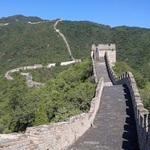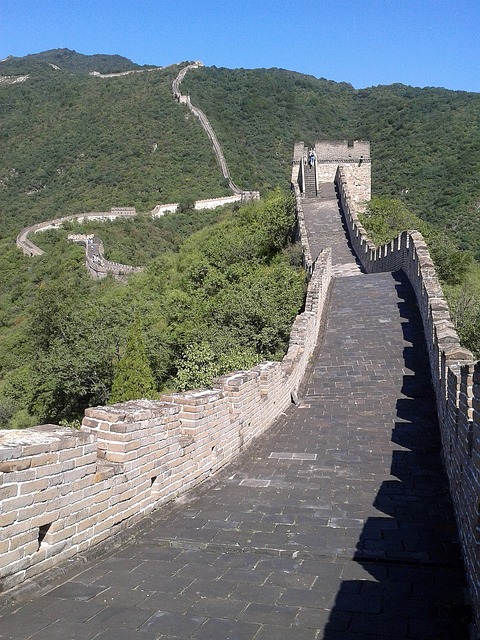Great Wall of China Visible from Space: Myth Debunked

Great Wall of China Visible from Space: Myth Debunked
Have you heard that the Great Wall of China is the only human-made structure visible from space? This widely believed Great Wall of China visible from space myth has captured imaginations for decades, suggesting the Wall’s grandeur spans even to the cosmos. Let’s unravel its origins, debunk it with science, and explore its cultural significance to reveal what’s really visible from up there.
Origins of the Great Wall Visibility Myth
Where did this idea that the Great Wall of China visible from space come from? Its roots lie in a mix of early speculation and cultural pride.
Early Speculation in the Pre-Space Era
Before humans ventured into space, writers and scholars speculated about what could be seen from above. By the 19th century, some claimed the Great Wall’s massive length—over 21,000 kilometers—made it a prime candidate for visibility from space, despite no evidence (University of Oxford, 2018). This idea spread through books and popular media, embedding itself in public consciousness.
Boost from Chinese Pride

In China, the myth gained traction as a symbol of national achievement. During the 20th century, textbooks and tourist guides often repeated the claim, amplifying the Wall’s legendary status without scientific backing (Peking University, 2020). It became a point of pride, even if unverified.
Cultural Variations of the Myth
The Great Wall myth resonates differently across cultures, reflecting how people view this iconic structure.
Western Fascination
In the U.S. and Europe, the myth fuels a sense of awe about the Wall’s scale, often tied to romanticized views of ancient engineering. It’s common in schoolbooks or trivia games, despite being inaccurate (Smithsonian Institution, 2021). The West sees it as a marvel, exaggerating its cosmic visibility.
Chinese Cultural Narrative
In China, the myth aligns with national identity, emphasizing the Wall’s grandeur as a testament to historical ingenuity. While some modern Chinese scholars debunk it, the idea persists in popular culture, especially in tourism campaigns.
Global Perspectives
In places like India or Brazil, the myth appears in global trivia or media, often without much scrutiny. These cultures may not focus on the Wall’s history but adopt the space myths narrative as a fun fact, showing its universal appeal.
Symbolic Meanings of the Myth
Why does this Great Wall of China visible from space myth endure? It carries deeper meanings beyond geography.
Symbol of Human Ambition
The myth reflects our fascination with humanity’s ability to create lasting monuments. Claiming the Wall is visible from space elevates it to a cosmic level, symbolizing our desire to leave a mark on the universe.
National Pride and Identity
For China, the myth underscores the Wall’s role as a cultural icon. It’s less about literal visibility and more about showcasing the nation’s historical and engineering prowess to the world.
Modern Interpretations and Space Observations
What do we know now that we’re actually in space? Modern technology and astronaut accounts debunk the Great Wall myth decisively.
What Astronauts Really See
Astronauts like Neil Armstrong and Chris Hadfield have stated the Great Wall isn’t visible from low Earth orbit (about 160–2,000 km above Earth). From this altitude, cities, highways, and even large airports blend into the landscape, and the Wall’s narrow width (4–10 meters) makes it indistinguishable without special equipment (NASA, 2022).
Visible Structures from Space
- City lights: Bright urban areas shine at night.
- Large dams: Like the Three Gorges Dam, more visible due to water contrast.
- Greenhouses: Spain’s Almería greenhouses reflect sunlight, catching the eye.
These insights from space missions clarify what’s truly visible.
Debunking Common Misconceptions
Let’s tackle the biggest myths about the Great Wall of China visible from space head-on.
The Wall is Uniquely Visible
Not true. The Wall’s narrow, earth-toned structure blends into the terrain, unlike broader, reflective features like rivers or cities. Even from the Moon, no human-made structures are visible without advanced optics (MIT, 2020).
It’s Visible from the Moon
This is a popular exaggeration. From the Moon’s distance (384,400 km), Earth’s details are too faint to spot any specific structure, including the Wall. Astronauts confirm this claim is pure fiction.
Satellites Prove the Myth
While satellites with high-resolution cameras can photograph the Wall, this requires zooming in, not naked-eye visibility. This technicality often fuels the space visibility myths, but it’s not what people imagine.
Scientific and Cultural Impact of Debunking
Scientific Clarity
Understanding what’s visible from space helps us grasp Earth’s scale and our place in it. NASA’s imagery shows the planet’s beauty lies in natural features like oceans and deserts, not just human creations.
Cultural Reevaluation
In China, debunking this myth shifts focus to the Wall’s historical significance—its role in defense and trade—rather than unproven claims. It encourages a deeper appreciation of its true legacy.
Conclusion
The Great Wall of China visible from space myth is a captivating tale, born from speculation and pride, but it doesn’t hold up under scrutiny. Science shows the Wall blends into Earth’s vast tapestry from orbit, yet its cultural and historical weight remains undeniable. Ready to bust more myths? Explore omnimyths.com for more eye-opening truths!
Frequently Asked Questions
Q: Why do people believe the Great Wall is visible from space?
A: The Great Wall myth stems from 19th-century speculation and Chinese pride, amplified by media and tourism without scientific evidence.
Q: How did the Great Wall visibility myth start?
A: Early writers guessed its massive length made it visible, and cultural narratives in China boosted the unverified claim.
Q: What’s the difference between satellite and naked-eye visibility?
A: Satellites can zoom in to see the Wall, but the human eye can’t spot it from orbit due to its narrow, blending design.
Q: How far up can you see the Great Wall?
A: Even from low Earth orbit (160 km), the Great Wall of China visible from space isn’t distinguishable without high-tech lenses.
Q: What human-made structures are visible from space?
A: City lights, large dams, and reflective greenhouses stand out more than the Wall, per astronaut observations.
Q: Why does debunking this myth matter?
A: It shifts focus to the Wall’s true historical and cultural value, moving past space myths to celebrate its real legacy.